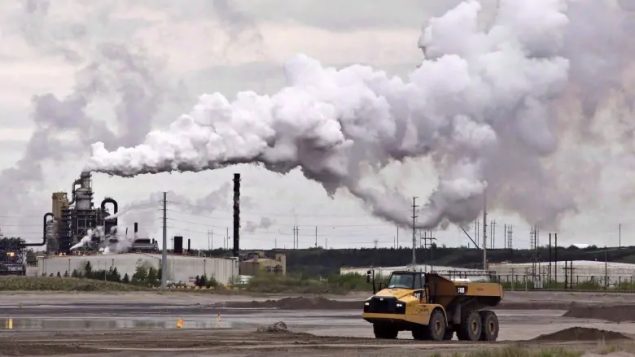Tiny particles of metal contaminants from Alberta’s oil sands are carried over long distances and affect weather patterns in the surrounding regions, according to a new study.
The study by Parisa Ariya, a professor of chemistry and atmospheric and oceanic sciences at McGill University, and her research team looked at contaminants in snow taken as far as 25 kilometres from the giant oil sands operations in the Athabaska Basin over a period of two years.
The scientists also found that the snow in the Athabaskan oil sands regions of northern Alberta contains up 100 times more nano-sized particles of metal contaminants such as chromium, nickel, copper than snow samples taken from downtown Montreal, indicating that air pollution is much greater close to the oil sands.
“Fresh snow is a snapshot of atmospheric processes,” Ariya told Radio Canada International. “The snow absorbs the hard metal particles and embeds it and this allows us to see things that we might not be able to see otherwise.”
The results of the study presented in the scientific journal Environmental Pollution are of concern since both the World Health Organization (WHO) and the International Panel on Climate Change (IPCC) have identified nanoparticle pollution as a major challenge in climate change, Ariya said.
“The aerosols or airborne particles are the major uncertainty of the International Panel on Climate Change and at the same time they are the top priority of the World Health Organization,” Ariya said.

A flare stack lights the sky from the Imperial Oil refinery in Edmonton Alta, on Friday Dec. 28, 2018. The World Health Organization (WHO) and the International Panel on Climate Change (IPCC) have identified nanoparticle pollution as a major challenge in climate change. (Jason Franson / THE CANADIAN PRESS)
The WHO singled out nanoparticle pollution as the main culprit in eight million premature deaths every year around the world, she added.
“Pollution is the major disease that we are facing at the moment,” Ariya said.
The study showed that the structure of these nanoparticle and microparticle contaminants released by the oil sands industry allows a process called ice nucleation, Ariya said.
The ice nucleation process is at the heart of cloud formation, she said. It allows clouds to form more rapidly and efficiently and at higher temperatures than when there is simply mineral dust in the air.
This means that they can alter cloud formation processes as well as precipitation frequency and intensity, which control extreme weather events, such as floods and droughts at the two extremes, Ariya said.
The study provides a previously unknown link between human-made air pollution and weather and climate, Ariya said.
And because these nanoparticles are so small and so light, they can travel great distances and have impact regionally and globally, Ariya said.







For reasons beyond our control, and for an undetermined period of time, our comment section is now closed. However, our social networks remain open to your contributions.